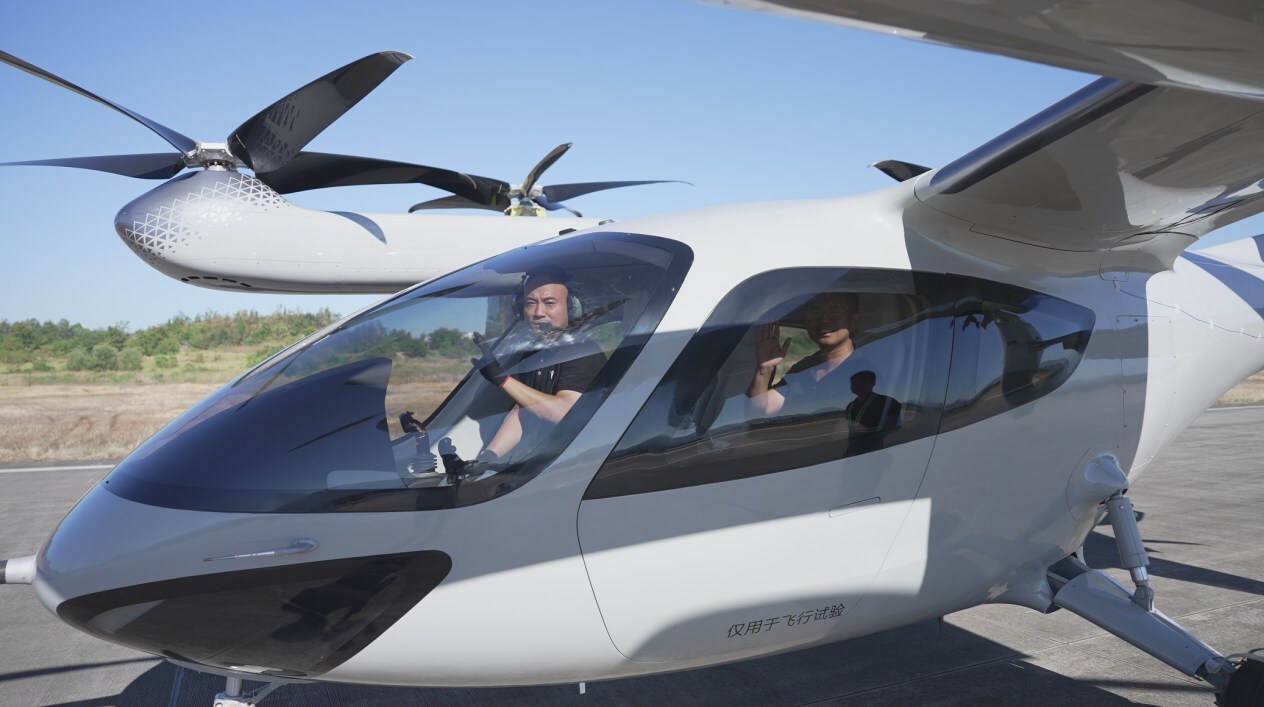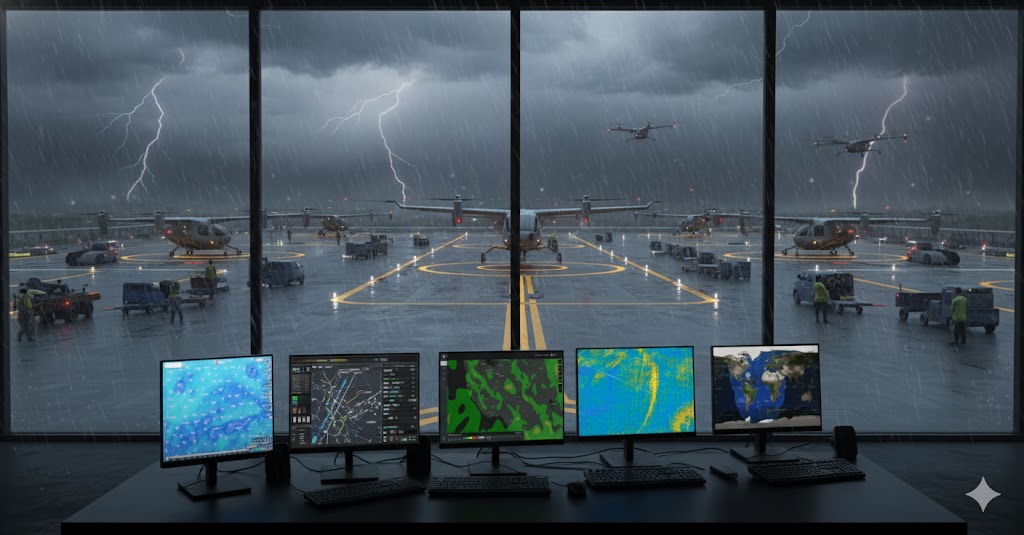Arizona’s Senate Bill 1307 represents a calculated bet on the future of low-altitude mobility. Signed into law by Governor Katie Hobbs on May 13, 2025, and taking effect on September 26, 2025, this legislation positions Arizona as one of the first states to establish comprehensive regulatory frameworks for what industry professionals refer to as Advanced Air Mobility (AAM).
The bill goes beyond acknowledging electric aircraft and urban air mobility operations, it builds supporting legal infrastructure, similar to Arizona’s autonomous vehicle approach a decade earlier. For those working in Arizona’s low-altitude economy, SB 1307 establishes clear definitions, planning requirements, and regulatory pathways that will shape how electric vertical takeoff and landing (eVTOL) aircraft, electric conventional takeoff and landing (eCTOL) aircraft, and powered lift vehicles operate in Grand Canyon State airspace.
Defining the New Aviation Landscape
SB 1307 brings precision to terminology that has often been used loosely in aviation circles. The law defines Advanced Air Mobility as “an air transportation system that primarily uses an electric aircraft, including eCTOL, eVTOL, and powered lift aircraft, to carry passengers or cargo in an urban or a regional area”. This definition deliberately focuses on electric propulsion and urban or regional operations, distinguishing AAM from traditional general aviation and conventional airline operations.
The legislation establishes specific categories for these new aircraft types. Electric vertical takeoff and landing (eVTOL) aircraft represent the air taxi concept that has captured public attention. In contrast, electric conventional takeoff and landing (eCTOL) aircraft encompass the broader category of electric-powered aircraft that use traditional runways. Powered lift aircraft, defined as heavier-than-air aircraft capable of vertical takeoff and landing with low-speed flight capabilities, cover the broader spectrum of vertical flight vehicles that may use various propulsion methods.
Perhaps most importantly for infrastructure planning, the law defines vertiports as “an area of land or water or a structure that is primarily used for the takeoff or landing of a powered lift aircraft, including associated buildings or facilities”. This definition provides the legal foundation for establishing these new aviation facilities across Arizona’s urban and rural landscapes.
Integration with Existing Aviation Infrastructure
The legislation requires Arizona’s Department of Transportation to develop comprehensive plans for this new aviation infrastructure. Beginning September 1, 2026, the department must either create a statewide plan or update the existing statewide aviation plan to include public vertiports and electric aircraft charging stations. This planning process requires consultation with political subdivisions that own or control public airports, commercial air carriers, the Federal Aviation Administration, and other relevant stakeholders.
The law also requires the department to designate an expert in advanced air mobility to serve as a resource for local and regional jurisdictions developing or implementing AAM operations. This person must establish working relationships with airports, air carriers, federal agencies, and other stakeholders, creating a central coordination point for Arizona’s AAM development.
Local political subdivisions retain significant authority under the new law. They can establish the location of public and private vertiports, electric aircraft charging stations, and other advanced air mobility infrastructure, provided they comply with applicable federal laws and Federal Aviation Administration safety standards. This approach balances state coordination with local control, recognizing that vertiport placement will often depend on local zoning, land use, and community acceptance considerations.
Regulatory Scope and Federal Compliance
SB 1307 applies specifically to advanced air mobility aircraft with a gross takeoff weight of 300 pounds or more and the capability of carrying passengers or cargo. This threshold excludes smaller recreational drones while covering the commercial aircraft that will form the backbone of Arizona’s developing low-altitude economy.
The legislation emphasizes compliance with federal aviation standards throughout its provisions. Political subdivisions must adhere to Federal Aviation Administration and U.S. Department of Transportation safety standards when establishing vertiport locations and infrastructure. This approach acknowledges that aviation remains primarily under federal jurisdiction while creating state-level frameworks that support federal oversight.
The Arizona Commerce Authority receives specific responsibilities under the law to provide educational materials to local and regional jurisdictions about the benefits of electric-powered lift aircraft and advanced air mobility. This educational component acknowledges that the successful implementation of AAM operations will necessitate a comprehensive understanding of the technology’s capabilities and limitations across state and local governments.
Economic Implications for Arizona’s Low-Altitude Economy
Arizona’s aerospace and manufacturing base provides a natural foundation for the development of advanced air mobility. The state ranks among the top three in the nation for aerospace manufacturing strength, with major companies like Boeing, Raytheon, Honeywell, and Northrop Grumman maintaining significant operations there. SB 1307 builds on this existing industrial base by creating regulatory certainty for companies developing AAM technologies and services.
The legislation signals to manufacturers, infrastructure developers, and air mobility companies that Arizona is prepared to move beyond testing toward commercial deployment. This regulatory clarity can attract investment in manufacturing facilities, maintenance operations, and service providers that will form the ecosystem supporting advanced air mobility operations.
For rural and underserved communities, advanced air mobility offers potential solutions to connectivity challenges that traditional aviation cannot economically address. eVTOL aircraft operating from vertiports could provide medical transport, emergency services, and passenger connections that don’t require the infrastructure investment of traditional airports. SB 1307’s emphasis on statewide planning ensures these benefits reach beyond Arizona’s major metropolitan areas.
Industry Response and Implementation Timeline
The Arizona Chamber of Commerce and Arizona Manufacturers Council championed SB 1307, recognizing the economic opportunities it creates. Industry supporters view the legislation as essential groundwork for attracting AAM-related businesses and ensuring Arizona captures its share of a market projected to reach tens of billions of dollars globally.
The law’s September 26, 2025, effective date provides immediate regulatory clarity while allowing time for implementation planning. The September 1, 2026, deadline for statewide planning development gives the Department of Transportation just over a year to complete its stakeholder consultations and planning process.
This timeline aligns with broader industry development schedules. Several eVTOL manufacturers expect to receive Federal Aviation Administration certification and begin commercial operations in the mid-2020s. Arizona’s regulatory framework will be in place to support these initial operations and the infrastructure development they require.
The legislation positions Arizona to compete with other states pursuing advanced air mobility leadership. Much as the state’s early embrace of autonomous vehicle testing attracted companies like Waymo and Uber, SB 1307 creates similar first-mover advantages for AAM development. Companies evaluating where to locate manufacturing, testing, or service operations will find established regulatory pathways and state support in Arizona.
Arizona Senate Bill 1307 represents more than regulatory housekeeping. It establishes the legal and planning foundations for a new industry that could reshape how people and goods move through the state’s airspace. By acting early, Arizona positions itself not just to participate in the advanced air mobility industry but to help lead its development across the American Southwest.




